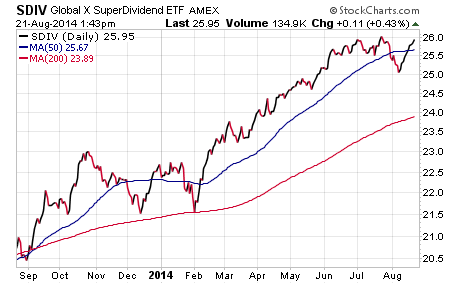ETFs To Round Out Your International Exposure
Post on: 13 Июль, 2015 No Comment

A growing number of financial advisors are using exchange-traded funds to achieve international equity exposure for their clients, embracing funds that offer access to both developed and international market beyond the U.S. This should hardly be surprising; the exchange-traded structure delivers an efficient way to tap into an asset class that should be at the core of most long-term, buy-and-hold portfoliosespecially in an environment that sees the U.S. market struggling mightily to gain traction.
Those looking to keep the portfolio construction process simple tend to gravitate towards broad-based ETFs that offer exposure to a number of different economies. Some of the most popular international stock ETFs are those linked to the MSCI Emerging Markets Index and MSCI EAFE Index. two benchmarks that offer deep, balanced exposure to developing and advanced economies outside the U.S. respectively.
A combination of the Vanguard MSCI Emerging Markets ETF (VWO ) and Europe Pacific ETF (VEA ) delivers exposure to more than 1,000 individual stocks in dozens of international economieswith an effective expense ratio that is likely to be lower than 20 basis points [see also Special Report: Emerging Market ETFs In Focus ]. Thats mighty impressive for such a simple solution, but this approach leaves out some asset classes that might be worth considering, including:
Canadian Stocks
A lot of investors overlook the dynamic Canadian economy. since these stocks are excluded from EAFE funds that focus on developed markets outside of North America:
Allocation in MSCI Emerging Markets Index: 0.0%
Allocation in MSCI EAFE Index: 0.0%
ETF Solutions: For investors looking to achieve access to Canadian stocks, there are a number of options out there. EWC offers exposure to the largest Canadian companies, while CNDA delivers more exposure to the natural resource segment of this North American economy.
Small Cap International Stocks
Most popular international stock ETFs are dominated by large cap equities, which can diminish the connection to the local economies since portfolios tend to hold multi-national companies that derive revenues around the globe [see our Small Cap ETFdb Portfolio ].
Allocation in MSCI Emerging Markets Index: <1%
Allocation in MSCI EAFE Index: <1%
ETF Solutions: For those seeking broad-based exposure to small cap stocks, products such as the iShares MSCI EAFE Small Cap Index Fund (SCZ) and SPDR S&P Emerging Markets Small Cap ETF (EWX ) can be tremendously useful; these funds offer balanced, cheap exposure to small cap stocks in developed and emerging markets, respectively. Its worth noting that there are a number of more precise ETFs available as well, ranging from Australia and Canada to South Korea and Taiwan.
Frontier Markets
Frontier markets can be thought of as the other international stock, covering economies that are even less developed than the Chinas and Indias of the world. These markets are flush with riskincluding potentially significant political riskbut offer tremendous long-term potential as well. Think of these economies as an opportunity to invest in China 20 years ago.
Allocation in MSCI Emerging Markets Index: Zero.

Allocation in MSCI EAFE Index: Zero
ETF Solutions: The options for accessing stocks of frontier markets are still quite limited, though there are two funds that can deliver cheap, liquid access to this potentially promising asset class:
- Guggenheim Frontier Markets ETF (FRN ): This ETF consists of about 40 individual holdings, with the most significant allocations going to Chile (almost 40% of holdings), Colombia, Egypt, and Argentina. Other economies represented include Peru, Kazakhstan, Lebanon, Nigeria, and Qatarcountries that are generally absent from portfolios that use an EFA / EEM combo (or similar approach) for international exposure.
- PowerShares MENA Frontier Countries Portfolio (PMNA ): This ETFs portfolio is drastically different from FRN ; the PowerShares fund focuses on the MENA regionMiddle East and North Africa. So there are no South American economies, but rather healthy allocations to Egypt, Kuwait, and Qatar.
Utilities
Utilities stocks can be popular in volatile markets, since this corner of the market offers relatively stable returns and attractive cash flows. But the international stock component of most portfolios is light on this sector, tilting exposure instead towards banks and oil companies.
Allocation in MSCI Emerging Markets Index:
Allocation in MSCI EAFE Index:
ETF Solutions: For investors looking to beef up the allocation to emerging markets utilities companies, the Utilities GEMS ETF (UGEM ) can be useful for balancing out sector weightings in this section of a portfolio. In the developed market arena, the SPDR S&P International Utilities Sector ETF (IPU ) can help to beef up the relatively meager allocations made in most EAFE products.
Disclosure: No positions at time of writing.














